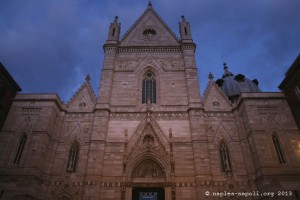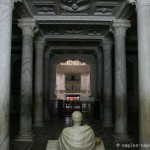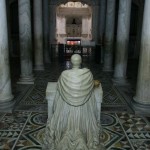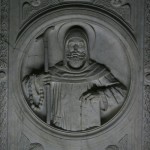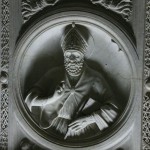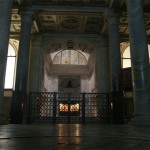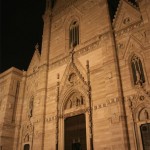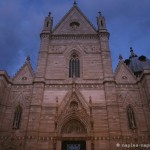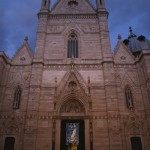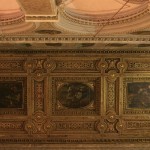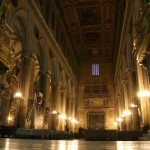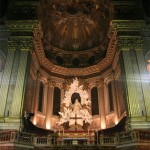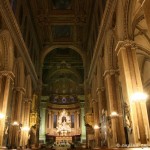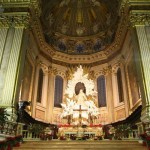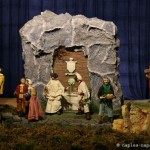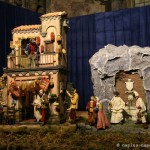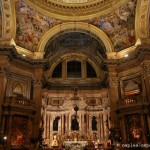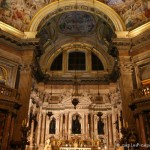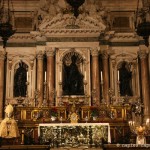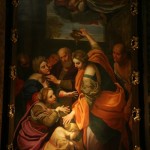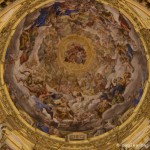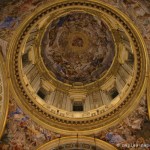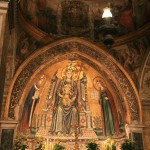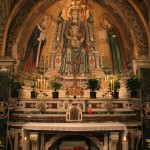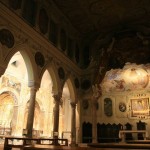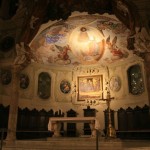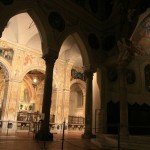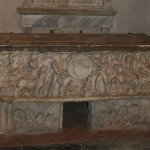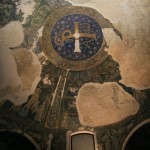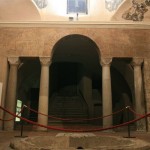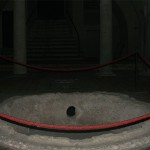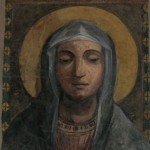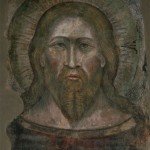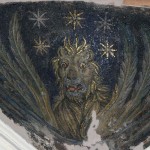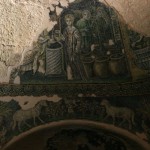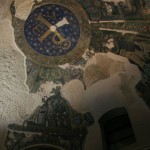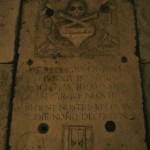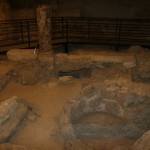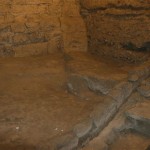The Cathedral of Naples, built between the end of the 13th and the beginning of the 14th century, dedicated to Our Lady of the Assumption, is especially famous for the relics of Saint Gennaro, saint patron of the city, which are preserved there. It is also designated as Duomo San Gennaro.
The contemporary cathedral
San Gennaro Cathedral was built from 1294 to 1323, by Charles I of Anjou, on the site of a cathedral basilica, St. Stephanie, dating from the sixth century.
An earthquake severely damaged the cathedral in 1349. It was also bombed in 1943.
Its neogothic façade dates back to 1876 and retains 15th century portals by Antonio Baboccio.
The Gothic interior, with three naves separated by ancient columns, has the tombs of illustrious people such as Saint Aspreno, the first bishop of the city.
The left nave leads to the early Christian Santa Restitua basilica, built in the IV-Vth century, and the San Giovanni in Fonte baptistery built a century later.
The Baroque San Gennaro Chapel is decorated with paintings by Lanfranco and Domenichino. It houses the relic of the skull of San Gennaro and blisters of its coagulated blood.
The Minutolo Chapel has retained its original Gothic architecture and decoration, with a mosaic pavement and 13th century frescoes by Montano d’Arrezo.
The crypt of Succorpo, built from 1497 under the apse to accommodate the relics of San Gennaro houses Renaissance statues of Tommaso Malvito and busts of the sixteen first bishops of Naples.
- crypte de la cathédrale de Naples
- Crypte
- Cripta, duomo di Napoli
- Cripta, duomo di Napoli
The chapel of the Treasury of San Gennaro, jewel of the Baroque Neapolitan art, was built by Grimaldi in the first half of the 17th century. The fresco of the dome representing Paradise was painted by Giovanni Lanfranco in 1643. The walls are frescoed by Domenichino (12th century).
The sacristy holds 44 silver busts of the protectors of Naples, including the reliquary bust of Saint Gennaro, a masterpiece of goldsmithing made in the fourteenth century.
- Cathédrale de Naples
- Cathédrale de Naples
- Cathédrale de Naples
- Cathédrale de Naples
- Crèche napolitaine
- Crèche napolitaine
- Cappella San-Genaro
- Cappella San-Genaro
- Cappella San-Genaro
- Cappella San-Genaro
- Cappella San-Genaro
- Cappella San-Genaro
The ancient church of Santa Restitua
The early Christian basilica of Santa Restitua was built in the fourth century by Constantine on an ancient temple dedicated to Apollo.
The nave on the right houses one of the oldest Christian baptisteries.
Originally it was much larger, it had five naves. But it was rebuilt after the earthquake of 1456.
The columns, the arches and the remains of pavements testify of the paleochristian art but also of the Angevin period.
In the apse are a 13th century fresco of Christ on a throne. The most notable chapel is that of Our Lady of Principe, whose apse is decorated with a fresco of the Virgin and Child in Majesty with the Gennaro and Restituta, made in 1322 by Lello d’Orvieto.
The oldest San Giovanni in Fonte baptistery, dating back to the fourth century, is the oldest in the West, and behind the apse is the access to the archaeological excavations of the cathedral.
- Eglise antique
- Chiesa antica, duomo di napoli
- Eglise antique, duomo
- Chiesa antica, duomo di napoli
- Ancienne cathédrale
The Baptistery San Giovanni in Fonte
This baptistery, founded towards the end of the fourth century, is considered the oldest in the West, anterior to St. John Lateran in Rome.
Very beautiful mosaics of the VIth, in good state of conservation, decorate its walls. Its construction is attributed to Emperor Constantine.
The scenes depicted revolve around Christ, with Peter, The Samaritan woman and the wedding of Cana, the miraculous fishing, the pious women at the tomb and many other evocations.
- Ancien baptistère
- Ancien baptistère
- Antico battistero
- Peinture de Marie, baptistère antique
- Dipinte, antico battistero
- Ancien baptistère
- Antico battistero
- Antico battistero
- Ancien baptistère
The Greco-Roman ruins
Under the basilica of Santa Restituta, we come across a Greek wall from the temple of Apollo. Under the apse are the remains of the peristyle of the domus.
There is also a section of the aqueduct of the Roman period, pieces of walls from different periods, destroying or absorbing the ancient structures, as well as ancient reservoirs.
- Eglise romaine antique, sous le duomo
- Eglise antique romaine sous le duomo
Learn more :


